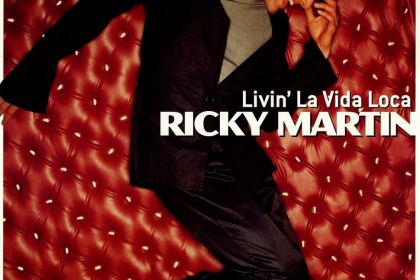Collaboration
Échame la Culpa: another Fonsi hit echoing Despacito chords

Échame la Culpa album cover
Échame la Culpa is a 2017 Latin pop track by Demi Lovato and Puerto Rican songwriter Luis Fonsi that remains their only collaboration to date. Following the phenomenal success of Fonsi's hit Despacito, Échame la Culpa quickly burst into major global charts where it stayed for some two years, while its music video garnered over 2 billion views on YouTube.
The Échame la Culpa lyrics (literally meaning Put the Blame on Me) revolve around a tumultuous romantic relationship coming to an end. The song is accompanied by the Aeolian-mode chord chain that repeats the harmonic progression used by Fonsi on his unprecedentedly popular track Despacito.
In the harmonic analysis of the Échame la Culpa chord chains, the scale degrees (denoted with Roman numerals) show the following progressions in the key of A minor: F–C–G–Am or VI–III–VII–i. This simple four-chord progression is looped throughout the song sections, revealing a common songwriting technique in which the tonic minor chord follows (or precedes) the chain composed of all three major chords of the Aeolian minor mode. Such harmonic progressions naturally generate a distinct major mood despite being written in a minor mode.
Watch Échame La Culpa (Video Oficial) by Luis Fonsi and Demi Lovato:
Here is the Despacito chord chain composed in the key of B minor: Bm–G–D–A or i–VI–III–VII. It is easy to see that the harmonic progression of both tracks is identical, albeit referring to different keys. A slight difference between the two concerns the tonic chord which either opens or closes the chord chain.
It should be said that the i–VI–III–VII progression itself is a rather clichéd technique used in many Latino pop songs including C'est la vie written by the Algerian folk musician Khaled as well as its Spanish cover Vivir Mi Vida released by Marc Anthony. Moreover, even modern classical composers do not hesitate to routinely loop this four-chord sequence as described in our article on the critical simplicity of Einaudi's best-known piece.
Discover more songs composed in Aeolian minor mode and check out their harmonic analysis in the following articles:
- 8 songs to introduce Aeolian mode and natural minor scale
- 6 songs combining harmonic minor and Aeolian mode
- Mariposa Traicionera: meaning and flamenco roots of Maná's top hit
- Livin' la Vida Loca: why is Ricky Martin's best song so catchy?
- A Dios le Pido: Juanes' Spanish lyrics behind the song success
- Suavemente: meaning of Elvis Crespo's best song
- El Farsante and 7 more songs by Ozuna in Dorian and Aeolian modes
- La Gota Fría: vallenato music masterpiece refashioned by Carlos Vives
- Porque Te Vas: origin and meaning behind Jeanette's best song
- Oye Mi Amor: the catchy harmony of Maná's most covered song



